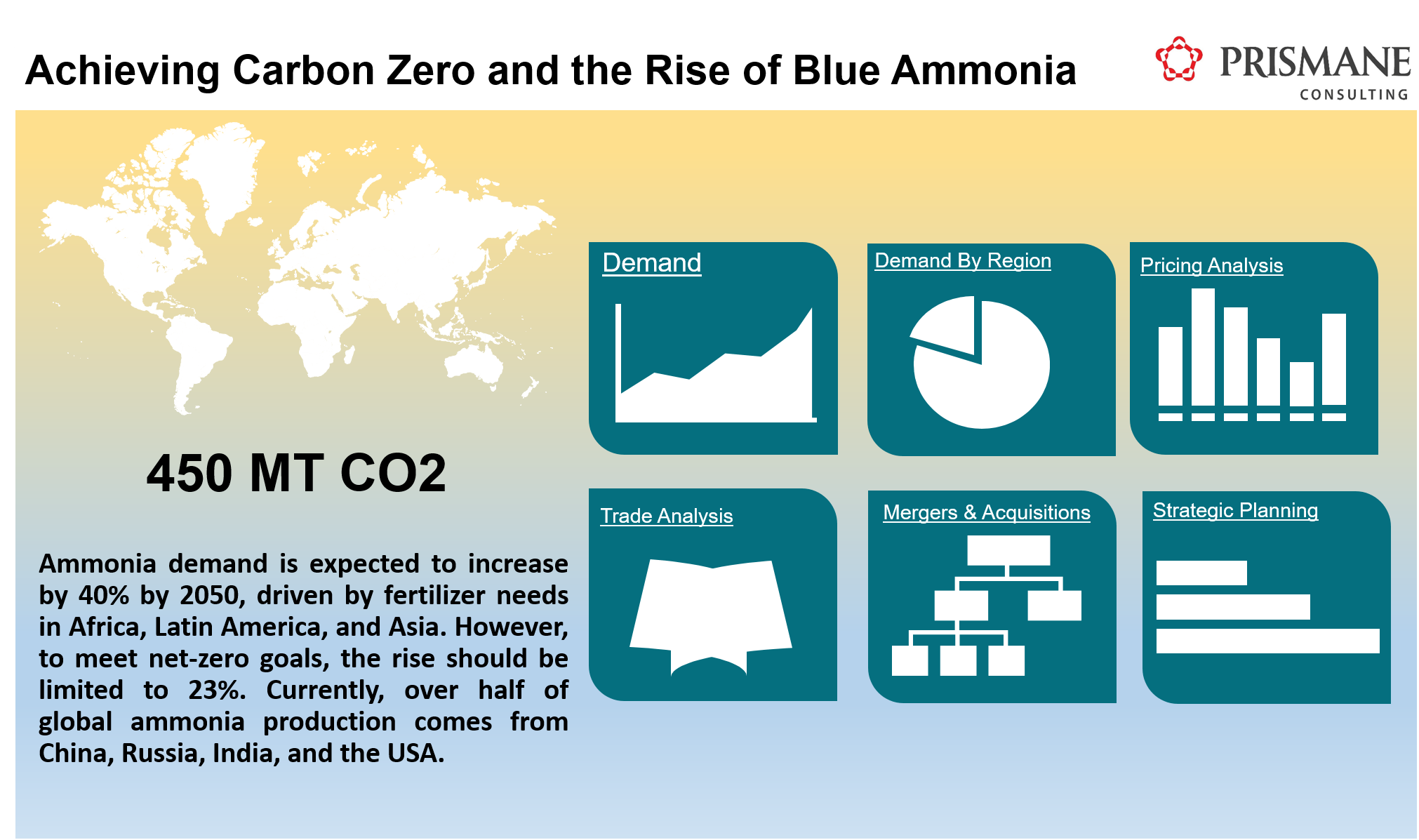Blue Ammonia is produced by the reaction of blue hydrogen and nitrogen in a process called the Haber-Bosch process. Here hydrogen is called blue hydrogen as carbon dioxide produced during its synthesis is captured and stored. Blue ammonia is used as fuel in industrial heating, heavy road transport, shipping, and fertilizer. The production of fertilizer through grey ammonia accounts for almost two percent of global carbon dioxide emissions. Different production routes can be adopted to ensure carbon-free production of fertilizer production. Production of fertilizer can be made carbon-free if ammonia is produced via a renewable pathway. Cost is one of the factors which is acting as a hindrance in the adoption of this method and cost reduction is one of the major challenges for industry players.
As green ammonia seems a costlier alternative, many initiatives are underway to reduce the cost of ammonia production through renewable sources. Examples of Blue Ammonia projects include Saudi Aramco’s Blue Ammonia production, and the Blue Ammonia project is by Abu Dhabi National Oil Company. ADNOC will proceed with a world-scale blue ammonia production facility in Ruwais, Abu Dhabi in the United Arab Emirates. The production capacity of the facility will be 1000 kt per year. Such blue ammonia exported by ADNOC will be able to significantly reduce carbon dioxide emissions from the life cycle of fertilizers as compared to conventional ammonia.
In July 2021, ITOCHU made an agreement with ADNOC on the marketing of blue ammonia for its use in the production of fertilizer and in industrial fields. ITOCHU with Ube Industries and other fertilizer production companies is planning to produce and sell blue ammonia to contribute to the sustainable growth of agrochemicals.
Ammonia demand is estimated to rise nearly by 40% by 2050 from the current demand. This demand is majorly driven by the demand for fertilizers in Africa, Latin America, and Asia. However, ammonia accounts for 450 MT CO2 emissions. So instead of that, net zero goals by 2050 require the demand to increase to 23% rather than 40%. At present, more than half of the ammonia produced in the world is from China, Russia, India, and the USA.
The continuous growth in gas production and LNG inflow has allowed gas producers and industries to expand the production of blue ammonia. The higher volumetric energy density of liquid ammonia than that of liquid hydrogen causes blue ammonia to be stored and transported more effectively than hydrogen. Thus, blue ammonia is a competitive alternative for decarbonizing the energy industry. Ammonia can be converted back into hydrogen and as a result, hydrogen can be used in fuel cells to generate electricity.
Since January 2020, the shipping industry has been obliged to limit its sulfur content in marine fuels. Hence blue ammonia comes out as an alternative fuel to decarbonize the shipping industry. Also, The International Maritime Organization (IMO) has set the goal to reduce greenhouse gas emissions by 40% by 2030 to 70% by 2050. The other major application of blue ammonia is in the decarbonization of coal-fired power plants. To achieve the 2050 decarbonization goals, Japan is aiming to increase the utilization of ammonia.
Ambitious targets of reducing carbon emissions till 2050 are expected to push the developments in the blue ammonia market. The chemical petrochemical and energy industries are putting combined efforts to achieve the carbon zero targets globally. Major European economies are leading the race for the carbon zero targets followed by the USA. Asian major economies such as China and India are also entering in the race and harvesting the benefits of a favorable economic situation in the region. Increasing demand for sustainable fertilizers and carbon-zero energy is expected to drive the blue ammonia in the coming years.

